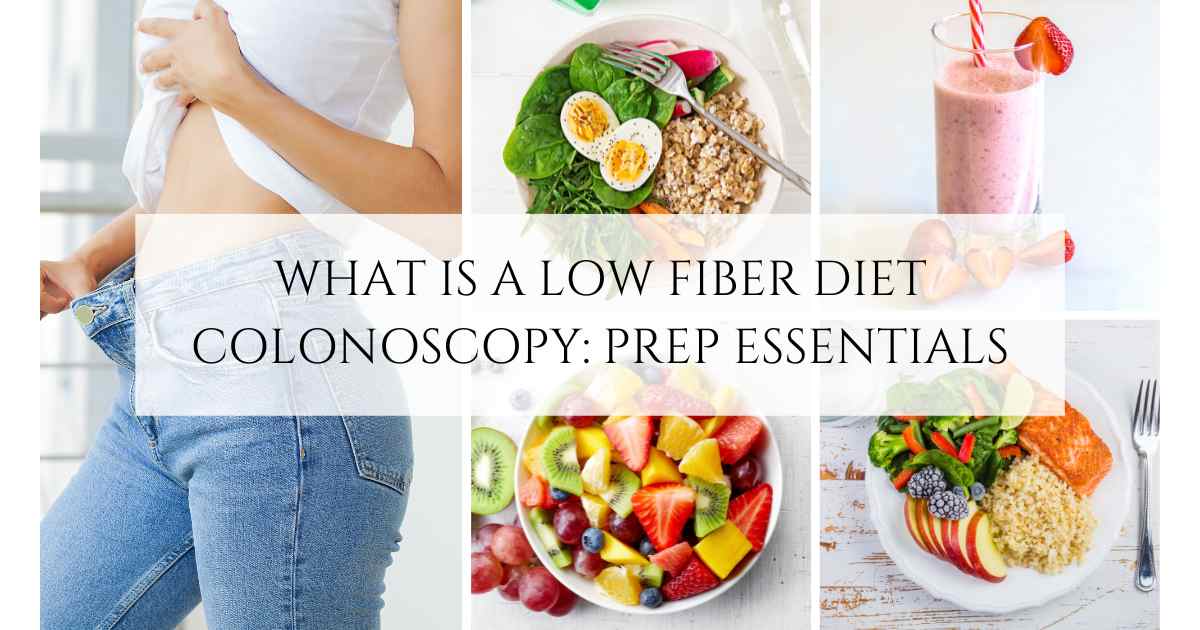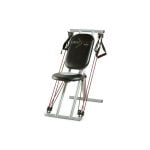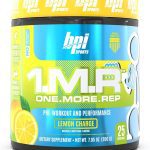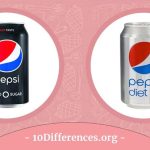A low fiber diet for colonoscopy restricts high fiber foods to clear the bowels. This diet aids in preparing patients for a more effective colonoscopy procedure.
Before undergoing a colonoscopy, it’s essential to follow a specific dietary regimen to ensure the colon is well-prepared for examination. Doctors often advise patients to switch to a low fiber diet a few days before the test. The purpose is to minimize residue in the intestines and enhance visibility during the colonoscopy.
Foods commonly included in a low fiber diet are those that are easily digestible and leave less waste, such as white bread, plain crackers, and cooked vegetables without skins. By adhering to this diet, the colon can be cleaned more efficiently, raising the likelihood of a successful screening. It’s vital to follow your healthcare provider’s instructions closely to avoid any complications during this critical diagnostic process.

Credit: www.everydayhealth.com
Why A Low Fiber Diet Before Colonoscopy
A low fiber diet before a colonoscopy is essential for a clear view during the procedure. Decreasing fiber intake helps empty the bowel, making abnormalities more visible to doctors.
Understanding The Importance Of A Low Fiber Diet For Colonoscopy Preparation
Prepping for a colonoscopy often involves following a diet that limits high-fiber foods. This is because fiber, while hugely beneficial for digestive health under normal circumstances, can obscure the view during a colonoscopy, making it challenging for your doctor to spot abnormalities such as polyps or areas of inflammation.
How Fiber Affects The Digestive System Before A Colonoscopy
- Fiber’s role in digestion:
Fiber normally helps to move waste through the digestive system, but this same property can leave a residue that interferes with the clarity of colonoscopy images.
- The risk of interference:
Excessive fiber can lead to remnants that not only make the procedure more complex but may also necessitate a repeat procedure if the views are not adequate.
The Goal Of A Low Fiber Diet Before Colonoscopy
The primary objective of adhering to a low fiber diet before a colonoscopy is to ensure that your bowels are as clean as possible for the upcoming procedure. A clean colon allows for the most effective and thorough examination, which is critical for the accurate diagnosis and assessment of colon health.
Foods To Avoid Before A Colonoscopy
Before a colonoscopy, there are specific dietary changes required to minimize fiber intake. Foods that are typically eliminated include:
- Whole grains and seeds: These foods are high in fiber and can linger in the colon.
- Raw fruits and vegetables: Fresh produce often contains skins and seeds that are fibrous.
- Nuts and legumes: These contain significant amounts of fiber and should be avoided in the days leading up to the procedure.
Recommended Foods For A Low Fiber Colonoscopy Diet
When preparing for a colonoscopy, it’s not just about what you can’t eat—there are still plenty of suitable options that will help you maintain energy levels while keeping your digestive system clear:
- Refined grains: Products like white bread and plain crackers are low in fiber.
- Tender meats: Opt for cuts of meat that are easy to digest, and lack tough fibers.
- Eggs and dairy: These are fiber-free and can be included in your pre-colonoscopy diet.
By focusing on these food choices, you will help ensure a more efficient and straightforward colonoscopy procedure, aiding your healthcare professionals in conducting a successful screening.
What Can You Eat On A Low Fiber Diet
Preparing for a colonoscopy, a low fiber diet is key; this includes foods like white bread, plain pasta, and lean meats. Steer clear of raw fruits and vegetables, opting instead for cooked or canned versions without skins or seeds to ensure a successful bowel prep.
Embarking on the journey of a colonoscopy requires proper preparation, and a core aspect of that prep is adhering to a low fiber diet. This diet helps clear the large intestine, ensuring a more thorough and efficient examination. Let’s delve into the specifics of what you can savor on a low fiber diet without compromising the success of your upcoming procedure.
Guidelines For Eating On A Low Fiber Diet
The primary aim of a low fiber diet before a colonoscopy is to minimize residue in the intestines. To achieve this, the focus is on foods that are easily digestible and leave fewer by-products post digestion. This part of the diet serves as a transition from your regular meals to the clear liquids that will be your main intake on the day before the procedure.
- Lean Meats, Poultry, and Fish: Opt for tender cuts of meat, such as chicken breast or fish, that are grilled, poached, or braised.
- Dairy Products: You can enjoy milk, yogurt, and cheeses, but in moderation to prevent any upset in digestion.
- Refined Grains: Turn to white bread, plain pasta, and cereals that are not high in fiber, such as puffed rice or cream of wheat.
- Eggs: Boiled, poached, or scrambled – eggs are a safe bet as they are low in fiber and filling.
Remember, the goal is to maintain a balance that will not interfere with the colonoscopy preparation or procedure.
Acceptable Fruits And Vegetables On A Low Fiber Diet
When tackling a low fiber diet, it’s essential to choose fruits and vegetables that are not only low in fiber but also easy to digest. Here’s a glance at some permissible options:
- Canned or Cooked Vegetables: Avoid those with seeds or skin and choose varieties like beets, carrots, and potatoes without the skin.
- Fruits without Skin or Seeds: Applesauce and ripe melons can usually be consumed, but make sure to steer clear of any fruit skins or seeds that can increase fiber content.
- Juices without Pulp: Apple and cranberry juice are good examples – they should be clear and free from any pulp.
Always consult your doctor or a dietitian to design a menu that aligns with your health needs and the specifics of your colonoscopy prep requirements. Remember, following these dietary guidelines is crucial for the success of your colonoscopy.
The American Cancer Society Recommends A Low Fiber Diet
Preparing for a colonoscopy, the American Cancer Society suggests adopting a low fiber diet to ensure a clear gastrointestinal tract. This diet minimizes the intake of whole grains, nuts, and certain raw fruits and vegetables, streamlining the colon’s cleansing process before the procedure.
Navigating the journey towards a colonoscopy, patients often encounter the recommendation to adopt a low fiber diet. This shift in eating habits is crucial for ensuring a clear view during the procedure, which can significantly aid in the prevention, early detection, and treatment of colorectal cancer.
The American Cancer Society underscores the importance of a low fiber diet as part of the preparatory phase, emphasizing its role in facilitating a more effective and thorough examination.
American Cancer Society’s Perspective On Low Fiber Diets
The American Cancer Society considers a low fiber diet an integral component of colonoscopy preparation. The primary goal of this dietary adjustment is to minimize the amount of undigested food passing through the digestive system, thereby allowing a more transparent and unhindered view of the colon and rectum during the screening.
What Does A Low Fiber Diet Entail?
Embarking on a low fiber diet involves a conscious selection of certain foods while limiting others:
- Grains and Bread: Choose items made from refined flour like white bread, pasta, and crackers. Items made from whole grains or containing seeds or nuts should be avoided.
- Fruits and Vegetables: Opt for cooked or canned fruits and vegetables without skins or seeds. Fresh options with high fiber content—like berries, leafy greens, and peas—are not recommended.
- Dairy Products: Dairy is generally permissible; however, high-fiber dairy products incorporating nuts or certain fruits should be sidestepped.
- Proteins: Tender meats, poultry, fish, eggs, and tofu are acceptable dietary elements, with tough or fibrous meats standing as exceptions.
Preparing For A Colonoscopy With A Low Fiber Diet
Preparing for a colonoscopy with a diet low in fiber isn’t just about what you eat; it’s about ensuring your body’s readiness for the procedure:
- Timing: It’s generally advised to begin this diet a few days before the procedure to effectively reduce residue in the digestive tract.
- Hydration: Amply hydrate with clear liquids like water, broth, and certain juices without pulp to maintain fluid balance.
- Medications and Supplements: Consult with your healthcare provider about any adjustments needed regarding medications or supplements that could influence bowel cleanliness.
Consequences Of Not Following A Low Fiber Diet
The effectiveness of a colonoscopy hinges on the clarity of the colon. Not adhering to a low fiber diet can lead to:
- Incomplete Visualization: Remaining fiber can obscure the colon lining, which may hide polyps or other abnormalities.
- Possibility of a Repeat Procedure: If the viewing is compromised, you might need to undergo another colonoscopy sooner than typically recommended.
Remarkably, by taking proactive dietary steps under the guidance of entities like the American Cancer Society, patients can contribute substantially to the success of their colonoscopy and, thus, their overall colorectal health.
Low Fiber Diet Breakfast
Preparing for a colonoscopy typically involves a low fiber diet to ensure a clear digestive tract. A suitable breakfast might include eggs with white toast, avoiding whole grains and fibrous fruits to facilitate easier examination during the procedure.
Embarking on a colonoscopy journey requires meticulous preparation to ensure the most accurate results—a crucial aspect is adhering to a low fiber diet. The goal is to clear out your digestive tract, which necessitates specific dietary adjustments, especially during breakfast, the day’s first meal.
Low Fiber Diet Breakfast Options
There’s a wide array of palatable yet low-fiber breakfast foods that align with colonoscopy prep guidelines. Let’s delve into some suitable choices:
- White bread toast:
Traditional toast can prove too high in fiber. Opt instead for white bread to keep fiber intake minimal.
- Eggs:
Eggs are a protein powerhouse and they’re naturally devoid of fiber, making them an excellent choice.
- Refined cereals:
Breakfast cereals can be rich in fiber, yet varieties like puffed rice and corn flakes offer a low-fiber alternative.
- Yogurt:
Generally low in fiber, yogurt also adds beneficial probiotics to your diet.
- Smooth peanut butter:
Avoiding chunky versions is key, as the smooth type is lower in fiber.
Maintaining this balance isn’t only necessary, but also achievable, with the right knowledge at hand.
Preparing A Low Fiber Breakfast Meal
Crafting a low fiber breakfast doesn’t mean you have to compromise on taste or satisfaction. You can combine the options mentioned above into a delightful breakfast that meets the requirements for your pre-colonoscopy meal plan.
Precisely in the morning, it’s important to select food items that are gentle on the digestive system while being substantial enough to carry you through to the next allowable meal. A piece of white toast with a side of scrambled eggs, topped with a small dollop of smooth peanut butter, accompanied by a serving of low-fat yogurt, strongly hits the mark of a balanced low-fiber breakfast.
Eating such a carefully considered meal sets a positive tone for the day, helping your body to smoothly transition into the more restrictive phases of preparation as the colonoscopy approaches.
With the right food choices and a thoughtful approach to meal composition, sticking to a low fiber diet for a colonoscopy doesn’t have to be a daunting task. It becomes an integral part of the process that paves the way for a successful and uncomplicated procedure.
Frequently Asked Questions For What Is A Low Fiber Diet Colonoscopy
What Foods Are Low In Fiber For A Colonoscopy?
For a colonoscopy, opt for low-fiber foods like white bread, plain pasta, and canned fruits without skins. Steer clear of whole grains, nuts, and raw fruits.
What Foods Can I Eat 3 Days Before A Colonoscopy?
Three days before a colonoscopy, eat low-fiber foods such as white bread, white rice, eggs, and well-cooked meats without skins or seeds. Avoid whole grains, nuts, and raw fruits and vegetables. Choose clear soups, broths, and refined cereals over their high-fiber counterparts.
Can I Eat Mashed Potatoes 2 Days Before Colonoscopy?
Yes, you can eat mashed potatoes 2 days before a colonoscopy as part of a low-fiber diet.
Can I Eat Cheese On A Low Fiber Colonoscopy Diet?
Yes, you can eat cheese on a low-fiber diet before a colonoscopy.
Conclusion
To sum up, embracing a low fiber diet before a colonoscopy is vital. This nutritional shift aids in bowel cleansing, ensuring a more effective examination. Remember to pick foods that are gentle on your digestive system. Such dietary adjustments, albeit temporary, play a crucial role in the success of your colonoscopy.
Always consult with your healthcare provider for personalized advice and support throughout this process.










